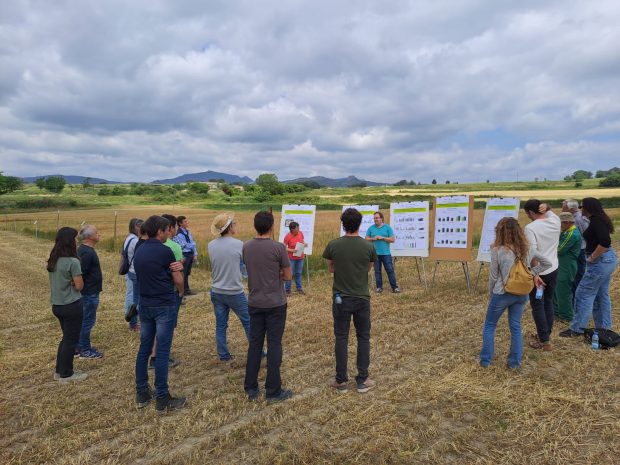CT BETA presents the results of 18 years of monitoring a trial of fertilisation with slurry in Osona
The results of a trial started in 2006 at a PATT conference, which evaluates the effects of fertilisation with pig slurry in annual double cropping systems in dryland conditions in Osona, are presented in Torelló.

The study focuses on evaluating the effects of nitrogen fertilisation with pig slurry on crop production and forage quality, on the dynamics of nitrates in the soil and on soil quality (physical, chemical and biological). This project aims to capitalise on the data collected over the years to study the evolution of different soil parameters and to demonstrate the impact of pig slurry fertilisation on soil quality.
Osona, a region known for its high level of livestock farming, has found the most economical and natural use for the excrement generated in its agricultural application. This practice is key to maintaining agricultural production, as it optimises the use of organic fertilisers as fertiliser for crops. On several farms in Osona, the practice of annual double cropping is common, combining a winter cereal and a summer cereal for fodder. Due to the uniqueness of these farms, it is essential to carry out correct fertilisation, especially in terms of nitrogen.
Some relevant observations
In the trial coordinated by the researcher Carme Casas of CT BETA, in annual double cropping systems in Plana de Vic, the yield of the summer crop depends entirely on rainfall from June to September. In the context of current climate change, where the summer drought period has been accentuated, it is evident that the summer crop would not be viable if the current trend continues.
The results show that, in the winter crop, increasing the use of pig slurry fertiliser significantly increases its production. On the other hand, no significant changes in summer crop production are observed in these double cropping systems. Under low rainfall conditions, rainfed crops use the nitrogen available in the soil less efficiently, which means that with over-fertilisation the nitrate content can increase significantly. Therefore, it is not recommended to exceed the limit of 170 kg N/ha in fertilisation in double cropping systems such as the one analysed, which is the current limit for application according to the regulations.
Significant changes have also been detected in the stable organic matter of the soil, with a significant decrease in humic and fulvic acids, proportional to the dose of nitrogen applied, factors that have a direct impact on its fertility.
In recent years, this project has been funded through the Technology Transfer Operation 01.02.01 of the Rural Development Programme of Catalonia 2014-2020. Based on the results obtained in the trial, a document on the fertilisation strategy in double cropping systems under rainfed conditions in a sub-Mediterranean climate will be drawn up.
